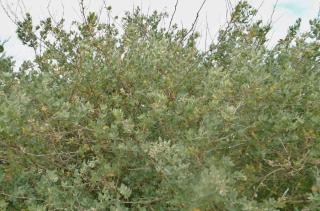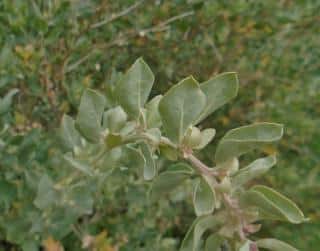

Sea orache key facts :
Botanical name – Atriplex halimus
Common names – sea orache
Family – Chenopodiaceae
Type – shrub
Bearing – bushy
Height – 5 to 6 feet (1.50 to 2 m)
Breadth – 6 to 10 feet (2 to 3 meters)
Exposure – full sun
Soil – any type
Foliage – semi-evergreen
Flowering: June-July, rather insignificant
Sea orache, as its name hints, is a shrub that loves living along the coast.
It’s very common along the Atlantic and Mediterranean coastlines. Its small blue-gray leaves resist sea spray very well: it isn’t afraid of these tiny, salt-laden drops of seawater.
If you’re looking for a coastal garden plant for a flower bed or hedge, Atriplex halimus will meet your needs!
Atriplex halimus adapts to all types of soil. It resists chalky soil very well, and does fine in sandy ground. However, to grow properly, you must give it full sun exposure.
For it to settle in faster, plant in fall. To plant your sea orache, you must:
 Dig a hole at least 12 inches deep (30 cm).
Dig a hole at least 12 inches deep (30 cm).If you’re aiming to grow a sea orache hedge, plant them 3 to 4 feet apart.
Atriplex halimus doesn’t require any specific care.
Over the summer that follows planting, stay on the lookout for drought, and water if need be. After that, once properly settled in, your sea orache will do fine on its own.
If your goal is to prune, do so after the blooming or at the very beginning of spring.
 In order to multiply your shrub, you can either:
In order to multiply your shrub, you can either:
Sea orache resists diseases well, and isn’t vulnerable to pests.
Whether in a garden bed or a pot, hedge or standalone, you can use sea orache creatively.
In a flower bed or hedge, pair it with:
Did you know…?
Sea orache leaves are edible. They’re loaded with trace elements, and you can harvest them at any time during the year, whenever you need them.